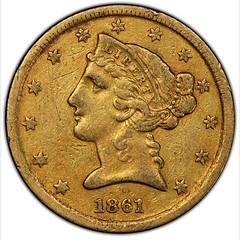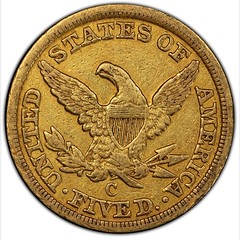
PREV ARTICLE
NEXT ARTICLE
FULL ISSUE
PREV FULL ISSUE
CHARLOTTE MINT UNDER CONFEDERATE CONTROLA Stack's Bowers blog article by Chris Bulfinch discusses operations of the Charlotte Mint under the control of the Confederate States of America. -Editor Coining operations did not immediately cease after the Confederate States of America seized the Charlotte Mint on April 20, 1861. Confederate troops occupied the building, turning it into a military headquarters and forcing employees to swear loyalty to the Confederacy or lose their jobs. The building hosted federal troops for a period during Reconstruction, and the facility later functioned as an Assay Office. Experts think that 887 gold half eagles were struck in late May 1861 after the mint was seized. Unfortunately for collectors, these are indistinguishable from those struck under federal auspices. In our Spring 2023 Whitman Expo Auction, Stack's Bowers Galleries will offer an example of this historic date, pedigreed to the CAG Set of the Fairmont Collection. The small mintage for the 1861-C half eagle, paired with significant collector demand for the historic date, makes it a desirable issue indeed. Roughly 200 examples are thought to exist, an estimate roughly borne out by the certified populations from both major third-party grading services.
Enhancing its desirability, the strike quality of 1861-C half eagles was superior in 1861 than it had been in either of the preceding two years, according to David Akers. Doug Winter concurs, writing in his book on Charlotte Mint gold coinage, Winter also points out that the coins entered circulation directly from the mint and circulated widely, which might explain the relatively large populations of lightly and moderately circulated examples in third-party grading services' censuses.
To read the complete lot description, see:
To read the complete article, see:
Wayne Homren, Editor The Numismatic Bibliomania Society is a non-profit organization promoting numismatic literature. See our web site at coinbooks.org. To submit items for publication in The E-Sylum, write to the Editor at this address: whomren@gmail.com To subscribe go to: https://my.binhost.com/lists/listinfo/esylum All Rights Reserved. NBS Home Page Contact the NBS webmaster 
|


